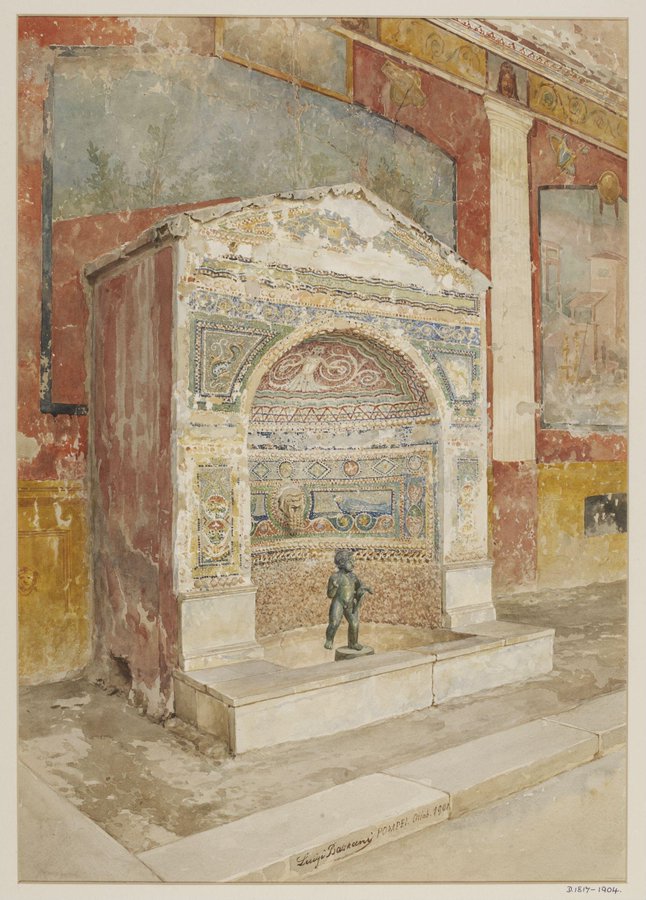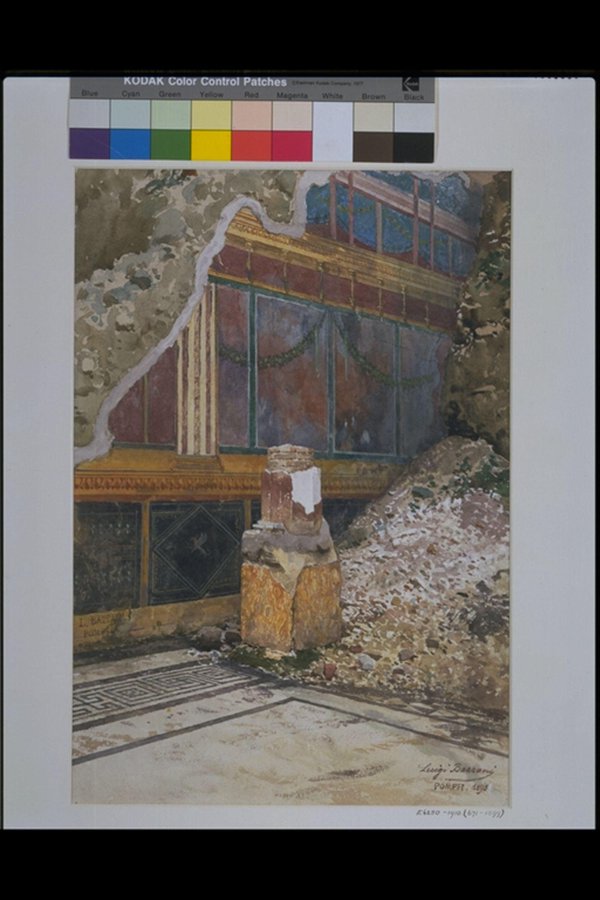
🧵#Thread 🧵These #stunning watercolours and drawings of #Pompeii @pompeii_sites , by Luigi Bazzani (late 19th c., early 20th c.), invite us to travel 100+ years back in time. Let's stroll through this ancient city and experience the vivid colors of time found in its buildings 





The remains of stone walls and façades we observe today along the streets of #Pompeii were, in fact, full of colors. Can you imagine for a minute what it was to stand at a crossroad or at the entrance of a house, flanked by many dipinti? 







100+ ago we could even experience the vivid colours unveiled in the recent excavations of the thermopolium at Pompeii's Regio V in other thermopolia from the city, decorated with paintings, marbles and different iconographies 





These watercolours and drawings allow us to visit the interior of the houses that had been/were being excavated: from entrances to atria, with their wells and marble tables... 







We can also observe domestic altars, fully decorated rooms around the atrium opening on to other spaces, and kitchens ... 







And other spaces fully decorated with vivid paintings, communicating peristyles and atria, as well as peristyles with the fountains, sculptural remains found in situ, and canals to collect water, all the them vividly decorated in different styles. 







The detail of some of these designs when it comes to depict nymphaea is #stunning.These designs are unique sources nowadays for archaeologists, and they contrast different sources with the possible artistic license of the author in these designs to assess their validity 







Finally, another unique aspect of these watercolours and drawings is to observe how artists and visitors could personally experience the ongoing state of excavations of #Pompeii, based on the design of some spaces still surrounded by lapilli and volcanic materials 





All watercolours and drawings in this thread, by Luigi Bazzani, have been taken from the online catalogue of the Victoria and Albert Museum
@V_and_A, the institution owning the copyright. If you have liked this #thread, please click RT in the first tweet above
@V_and_A, the institution owning the copyright. If you have liked this #thread, please click RT in the first tweet above
• • •
Missing some Tweet in this thread? You can try to
force a refresh

















